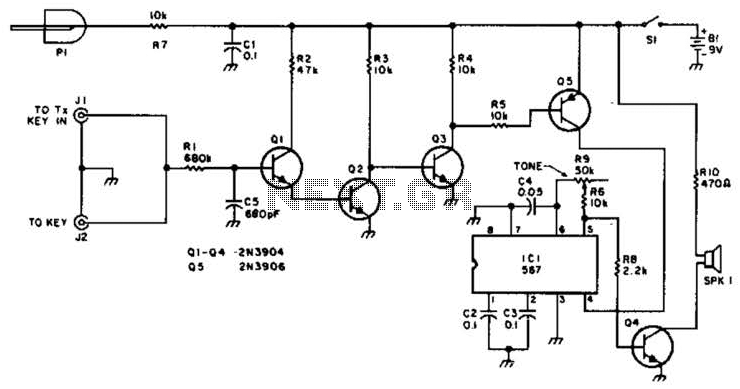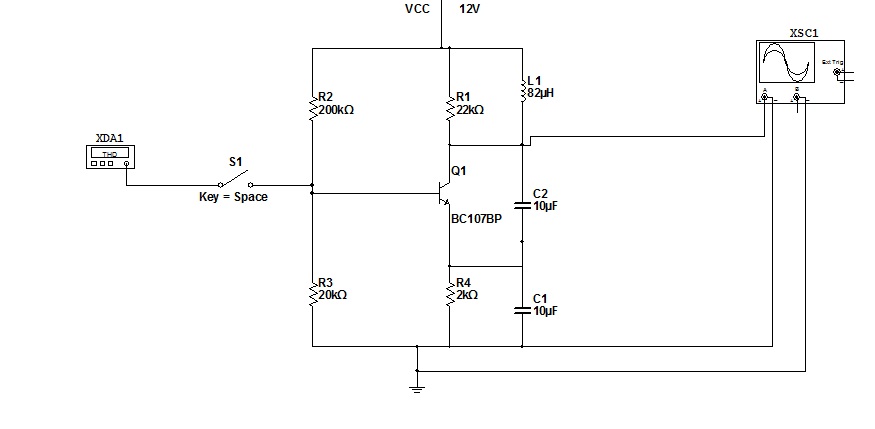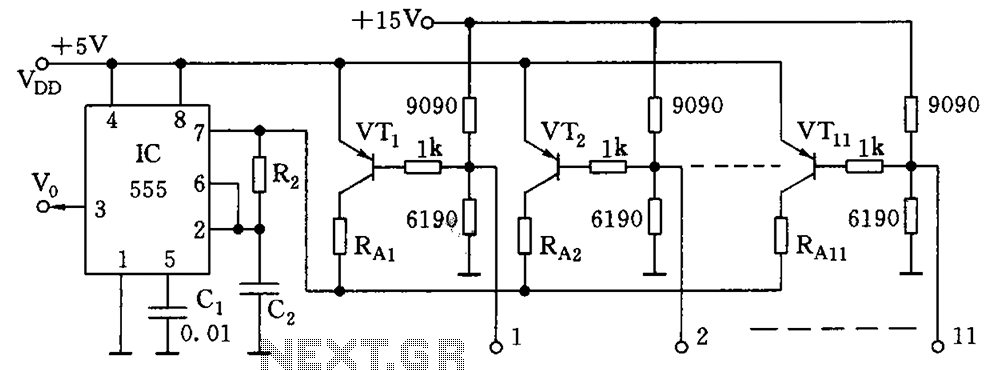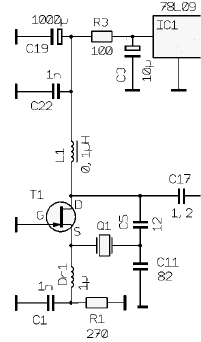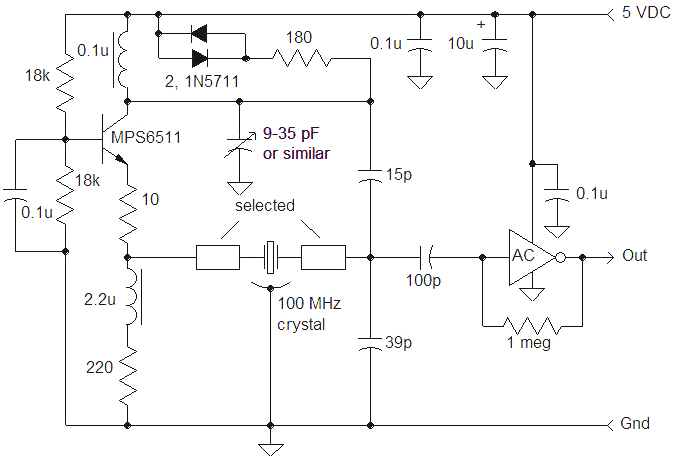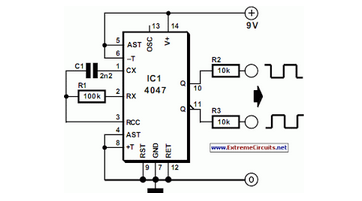
Crystal oscillator

International Crystal OF-1 LO oscillator circuit for fundamental-mode crystals that you can find.
The International Crystal OF-1 local oscillator (LO) circuit is designed to operate with fundamental-mode crystals, which are widely used in various frequency generation applications. This oscillator circuit typically employs a crystal resonator to achieve high stability and precision in frequency output.
The circuit configuration generally includes a transistor or operational amplifier as the active component, which is used to amplify the signal generated by the crystal. The fundamental-mode crystal provides a specific resonant frequency, which is determined by its physical dimensions and material properties.
In a typical setup, the crystal is connected in a feedback loop that ensures the oscillator maintains oscillation at its resonant frequency. Additional passive components, such as resistors and capacitors, are used to set the biasing conditions for the active device and to shape the frequency response of the circuit.
The output of the oscillator circuit can be utilized in various applications, including radio frequency (RF) transmission, frequency modulation, and as a reference signal in phase-locked loops (PLLs). The design of the OF-1 circuit allows for easy integration into larger systems, making it a versatile choice for engineers looking to implement stable frequency sources in their projects.
The choice of components, layout considerations, and power supply requirements are critical for optimizing the performance of the oscillator. Careful attention to these details ensures minimal phase noise and drift, which are crucial for high-performance applications.International Crystal OF-1 LO oscillator circuit for fundamental-mode crystals that you can find.
The International Crystal OF-1 local oscillator (LO) circuit is designed to operate with fundamental-mode crystals, which are widely used in various frequency generation applications. This oscillator circuit typically employs a crystal resonator to achieve high stability and precision in frequency output.
The circuit configuration generally includes a transistor or operational amplifier as the active component, which is used to amplify the signal generated by the crystal. The fundamental-mode crystal provides a specific resonant frequency, which is determined by its physical dimensions and material properties.
In a typical setup, the crystal is connected in a feedback loop that ensures the oscillator maintains oscillation at its resonant frequency. Additional passive components, such as resistors and capacitors, are used to set the biasing conditions for the active device and to shape the frequency response of the circuit.
The output of the oscillator circuit can be utilized in various applications, including radio frequency (RF) transmission, frequency modulation, and as a reference signal in phase-locked loops (PLLs). The design of the OF-1 circuit allows for easy integration into larger systems, making it a versatile choice for engineers looking to implement stable frequency sources in their projects.
The choice of components, layout considerations, and power supply requirements are critical for optimizing the performance of the oscillator. Careful attention to these details ensures minimal phase noise and drift, which are crucial for high-performance applications.International Crystal OF-1 LO oscillator circuit for fundamental-mode crystals that you can find.
